Tuesday, October 13, 2015
India And Energy
India’s Energy Crisis
Can India modernize its manufacturing economy and supply electricity to its growing population without relying heavily on coal—and quite possibly destroying the global climate?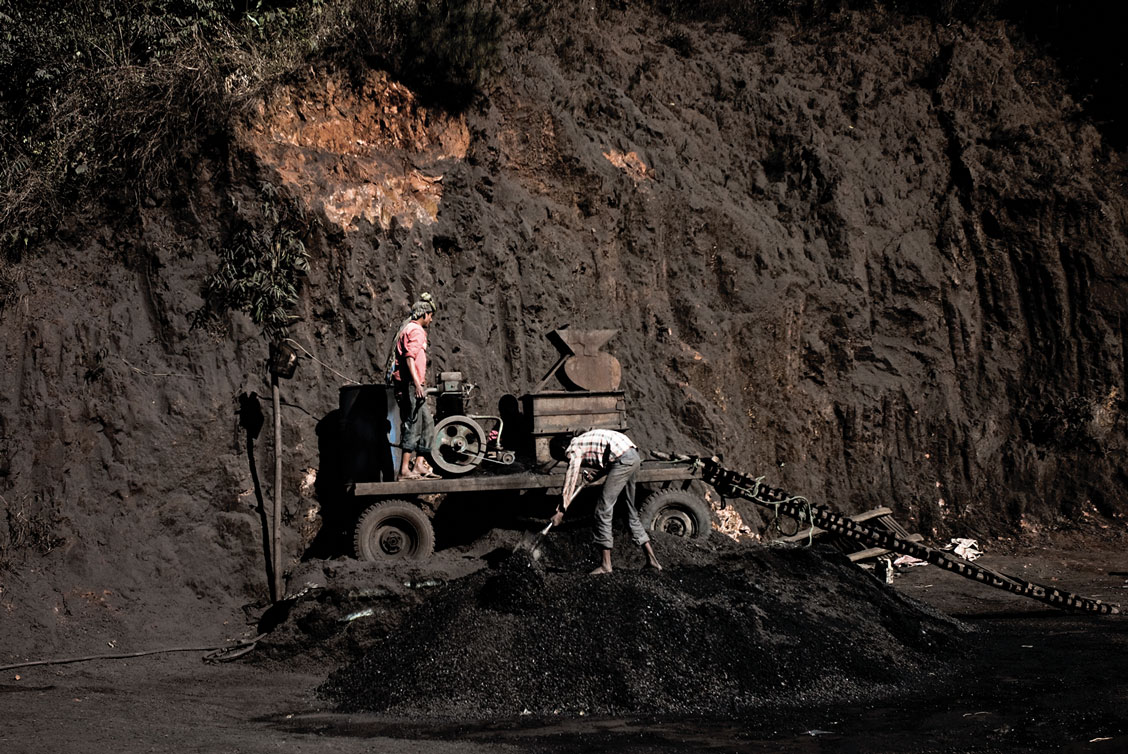

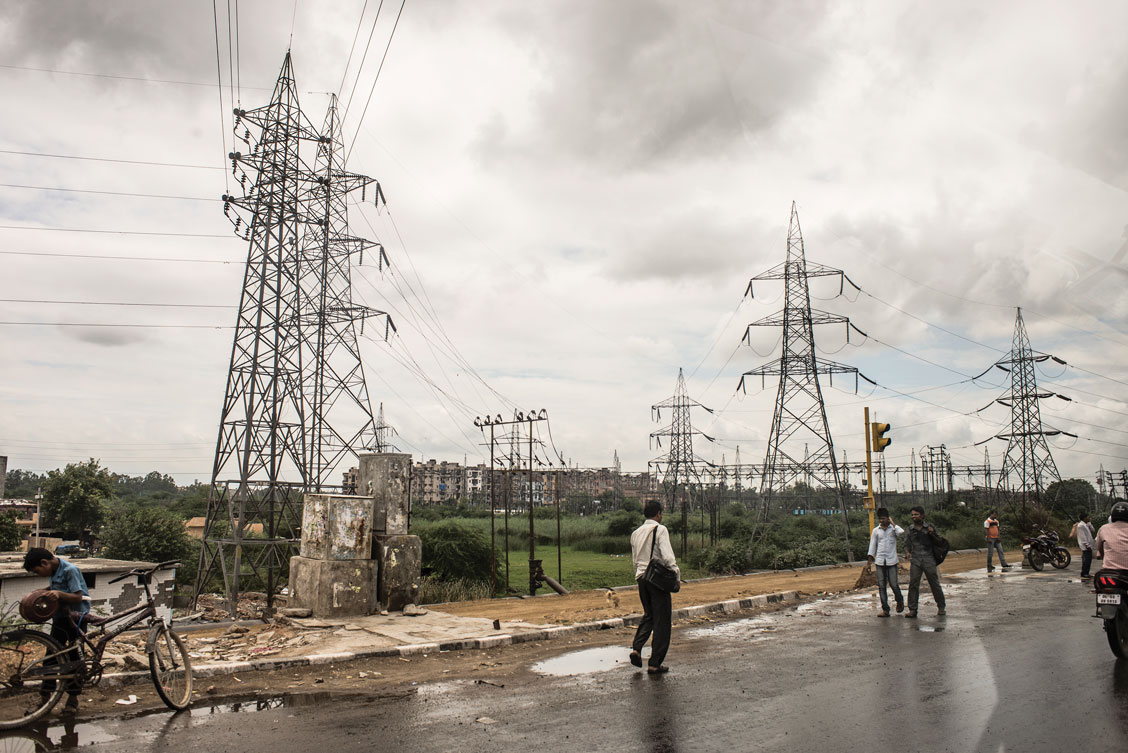
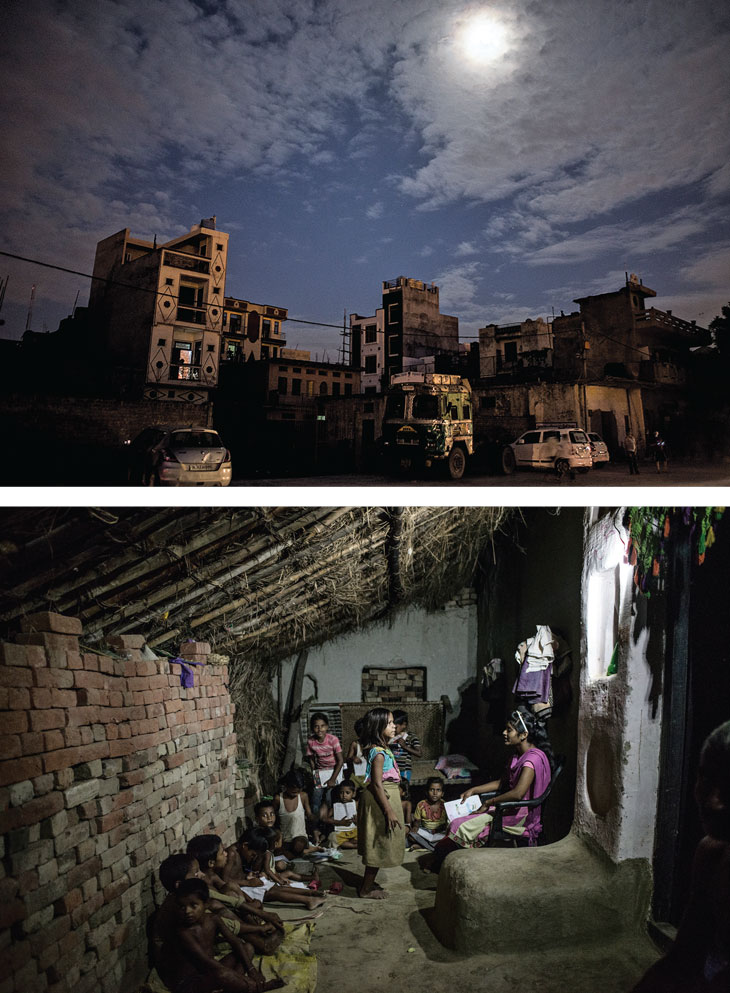
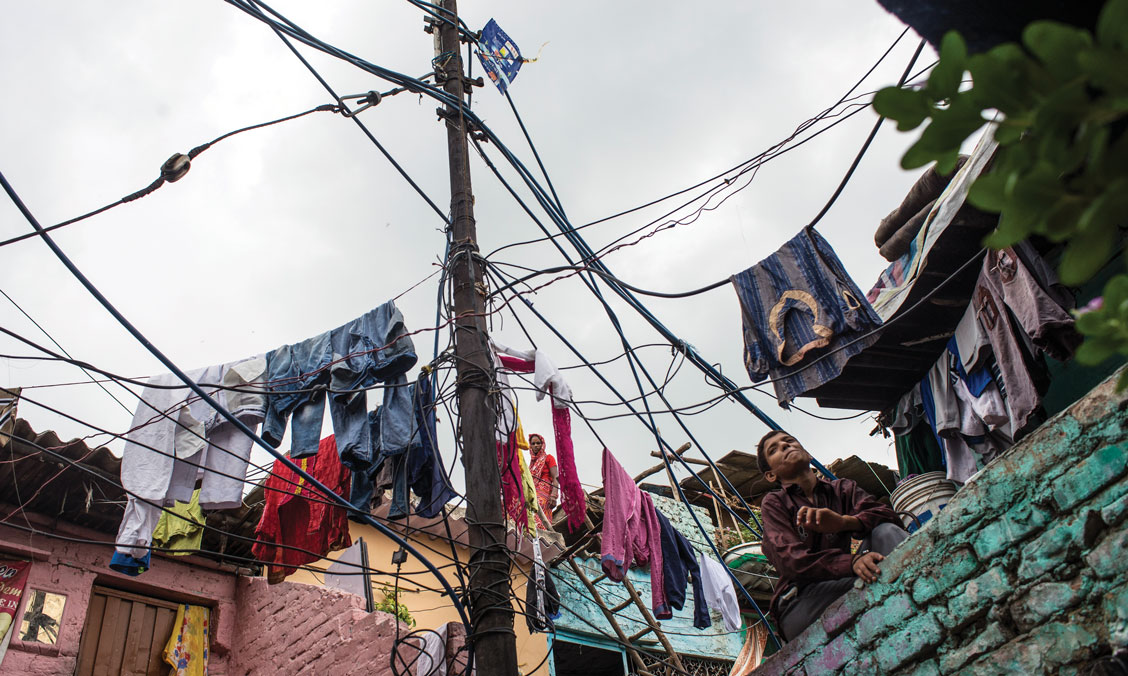

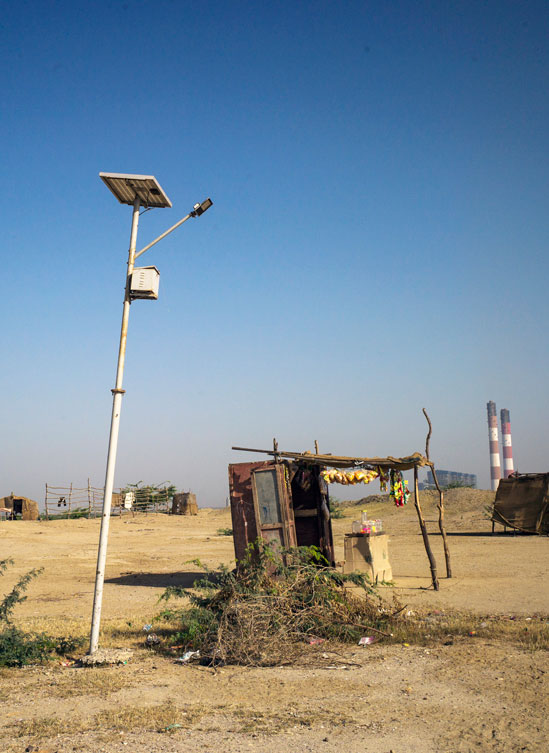
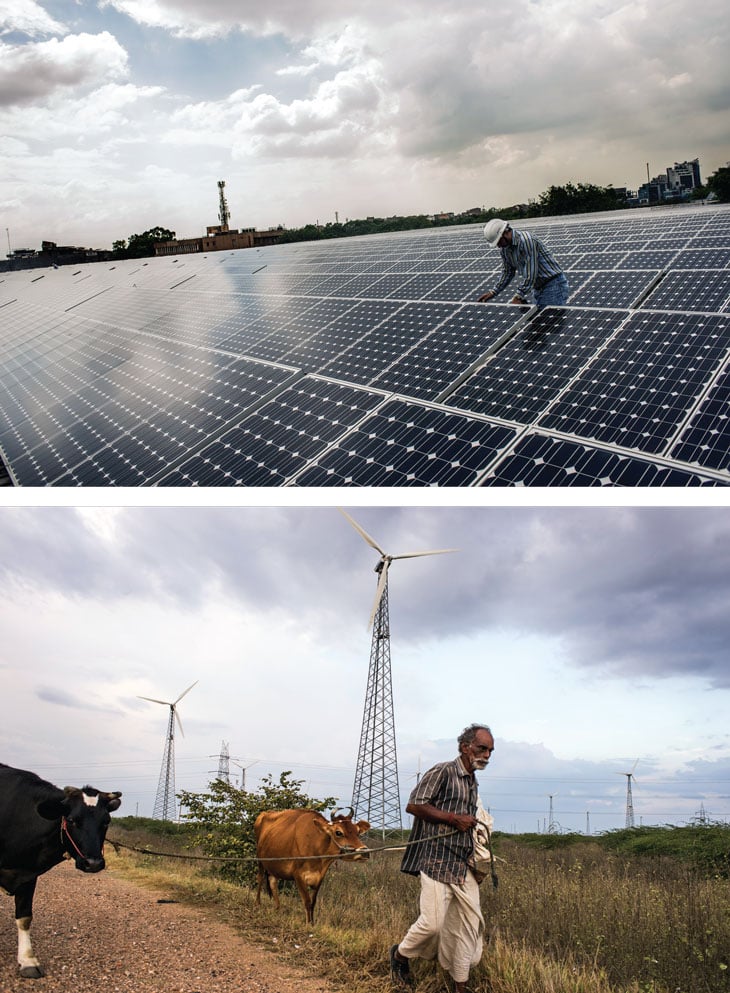
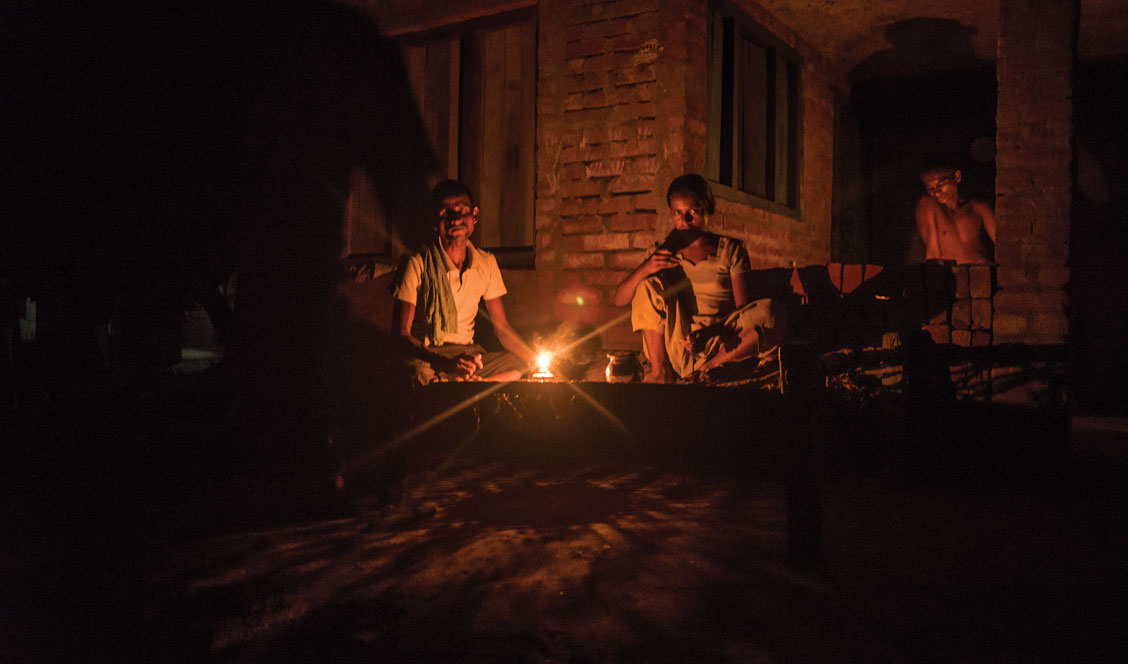
Can India modernize its manufacturing economy and supply electricity to its growing population without relying heavily on coal—and quite possibly destroying the global climate?
At least 300 million of India’s 1.25 billion people live without electricity ..... Another quarter-billion or so get only spotty power from India’s decrepit grid, finding it available for as little as three or four hours a day. The lack of power affects rural and urban areas alike, limiting efforts to advance both living standards and the country’s manufacturing sector. ....... Modi ... has promised to increase India’s renewable-energy capacity to 175 gigawatts, including 100 gigawatts of solar, by 2022. ..... (That’s about the total power generation capacity of Germany.) ...... India is attempting to do something no nation has ever done: build a modern industrialized economy, and bring light and power to its entire population, without dramatically increasing carbon emissions. Simply to keep up with rising demand for electricity, it must add around 15 gigawatts each year over the next 30 years. ......The country gets most of its electricity from aging, dirty coal-fired plants.
...... a massive 2012 outage that left more than 600 million people in the dark and drew attention to a utility sector in disarray, with an estimated $70 billion of accumulated debt. ...... China is now the world’s largest emitter of carbon..... Its population is expected to grow by another 400 million people over the next three decades, bringing it to 1.7 billion by 2050. ...... By 2050, India will have roughly 20 percent of the world’s population .....these younger politicians tend to be pragmatists, seeking to encourage economic growth through neoliberal policies such as deregulation and privatization of state industries.
Since his appointment, Goyal has emerged as a champion of renewable energy, calling for investments of $100 billion in renewables and another $50 billion in upgrading the country’s faltering grid. Almost every week he appears in the newspapers cutting the ribbon on a new solar power plant or wind farm or hydropower installation......... coal remains the cheapest source of power, and India’s coal industry has embarked on a building boom, doubling installed capacity since 2008. India consumes around 800 million tons of coal a year and could more than double that number by 2035 ..... Almost 70 percent of India’s electricity today comes from coal-fired plants. About 17 percent comes from hydropower, much of it from large dams in the northeast. Another 3.5 percent comes from nuclear. That leaves about 10 percent, depending on daily conditions, from renewables—mostly wind farms. ...... Over the next 25 years, “with the most aggressive assumptions in terms of renewables, we could go up to 18 or 20 percent from renewables,” Ramesh told me. “Hydro takes longer—it involves displacement of people and submergence of land, but we could expect that 17 percent contribution to go up to 25 percent. Nuclear is at 3.5 percent right now and, under the most aggressive assumptions, could go up to 5 or 6 percent. So under the best scenario—the most aggressive programs for nuclear, hydro, solar, and wind—bloody coal will still be at 50 percent.” In other words, while low- or zero-carbon sources would make up a greater portion of India’s energy supply, overall carbon emissions would nearly double: from around 2.1 billion tons in 2014 to more than four billion tons by 2040..........In 2012, when Modi was chief minister of the state of Gujarat, he presided over the launch of the world’s largest solar installation: a group of plants totaling nearly one gigawatt combined.
..... the government plans a program of building nuclear plants that would roughly triple capacity by 2024 and supply one-quarter of the country’s electricity needs by 2050. India also aims to further capitalize on its abundant potential for water power, particularly in the far northeastern states ....... the planned construction of an ultra-deepwater natural-gas pipeline across the Arabian Sea, from Iran to India’s west coast......building all these new projects will be extremely expensive, requiring a level of fiscal discipline and political will that India’s fractious, corrupt government has seldom achieved.
Modi, who has surrounded himself with a group of capable, mostly well-respected technocrats like Goyal, has limited power to compel the states to implement and enforce clean-energy mandates, beyond the promise of central-government largesse. Rules requiring utilities to use a minimum amount of renewable power have mostly been ignored. Key pieces of legislation, including important amendments to the Electricity Act of 2003, are stalled in parliament because few of the country’s politicians are willing to tackle the key issue: utilities are currently forced to sell electricity at below costs. Efforts to modernize the country’s antiquated utilities—as must happen if there is to be any chance of implementing Modi’s ambitious energy agenda—seem no closer to success than they did when he took office...........“The West will have to pay for the damage they have caused to the world and the planet,” Goyal said in a climate-change address in London in May.
........ Modi is trying to create a world-class renewable-energy industry while reforming a corrupt and bankrupt utility sector, growing the country’s manufacturing sector, keeping deficits low, and sustaining economic growth at around 8 percent a year. ......... Power losses in transmission and distribution across India average around 25 percent, and in some areas they can reach 50 percent. That means that half of the electricity being generated either never reaches an end user or is used but never paid for. Power losses in the developed world seldom reach 10 percent. For a grid about to be tested by the addition of large amounts of power from intermittent renewable sources, that outdated infrastructure is a huge problem............ the daily rolling brownouts that plague Delhi, along with most other Indian cities. With grid power uncertain, major Indian companies such as IT giant Infosys have installed their own power plants: Infosys is planning a 50-megawatt solar park to serve its offices in Bangalore, Mysore, and Mangalore.......Promising free water and electricity, without specifying a way to pay for it, is an old tradition in Indian state and local election campaigns.
Under the Aam Aadmi Party’s platform, Delhi families will get 20,000 liters of free water a month, and those who use less than 400 kilowatt-hours of electricity per month will get a 50 percent discount on their electric bills. Those subsidies will cost the government up to 16.7 billion rupees ($250 million) annually—and they will not help the discoms run profitable businesses......... Under the agricultural subsidies that have become the third rail of energy politics in India, farmers essentially get free power, which means the utilities that serve them lose money on every customer. Some of the loss is made up in handouts from the central government—but upgrading the grid will be of little use unless utilities can develop viable business models. The sector has been bailed out, to the tune of billions of rupees, twice in the last 13 years. The cumulative losses have increased so drastically that they could “pull down the whole growth agenda” of the Modi government .......Full reform, however, will require steps that remain politically off limits for now: complete privatization, less interference by state governments in utility operations, and, above all, an end to free electricity for farmers.
..... India’s vastness. ..... Expanding the grid to reach every home and business would require many trillions of rupees that the central and state governments simply don’t have. For many, gaining access to electricity through solar microgrids and other local power sources that bypass the traditional utility model is a far more practical option.........India’s energy problems will require solutions tailored to the country’s history, its technology and economy, and its place in the world.
..... Although Appapur is located inside a tiger reserve, the real problems are leopards, snakes, and wild boars. Leopards take 10 to 15 domestic cows and goats a year ...... A number of Indian and foreign providers, including fast-growing companies like Visionary Lighting and Energy and Greenlight Planet, are spreading small home solar systems across South Asia, driven by government incentives, plummeting costs for the technology, and high demand......... Every town in India, even the dustiest roadside hamlet, has banners and billboards advertising small battery and inverter systems. A new energy ecosystem is arising in complex and not always predictable ways...... The combination of failing utilities, heavy reliance on coal, a faulty grid, and an energy sector crippled by government subsidies and interference seems to argue that India has no chance: no path to economic growth and energy abundance except one that’s disastrous for the environment. But at ground level, the picture is more complicated and less bleak........ “The central government and outside investors are, naturally, focused on these big mega-projects, where they’re getting ridiculous financing, butthe real innovation is happening at the village level
,” says Anshu Bharadwaj, the executive director of the Center for Study of Science, Technology, and Policy, a Delhi think tank.“The most impactful way is to develop a large number of 100-kilowatt, half-a-megawatt projects that are distributed across the country, close to rural loads.”
........... You can’t extend the grid to every village and hut in India, but you also can’t develop and operate a 21st-century manufacturing base using unpredictable distributed solar power. ....... Bihar is typical of India’s rural states: it has more than 100 million people, less than one-fifth of whom have access to reliable electricity. The state discom is more or less bankrupt, subsidized electricity bills are artificially low, and electricity losses on the grid are close to 50 percent. The reach of the grid is random ...... “I visited a village today that doesn’t have electricity,” he told me in July,“and 100 meters away, the next village has good electricity. It’s confusing.
They may get it next month, next decade, or never.” ...... happens to be embarking on its modernization phase at a time when prices for renewable-energy generation, and for the technology to make it work at the local level, are starting to rival prices for traditional fossil-fuel-generated power. ...... Every microgrid and local solar system deployed reduces by a fraction the need to extend the grid; every new renewable-energy system installed by a business or factory reduces the pressure to build ultra-mega power plants........The Indian genius for adaptation and survival in chaotic and challenging circumstances
provides hope that the country can solve the seemingly insurmountable challenge of expanding its economy in a clean and sustainable fashion. In many ways there is no choice. “India cannot afford to replicate the American or Chinese ‘Grow now, pay later’ model,” says Jairam Ramesh. “We cannot afford to say, ‘We’re going to have 25 years of 8 percent GDP growth, then do a cleanup act later.’”









Friday, October 09, 2015
Europe's Conquest
How Europe Conquered the World
.jpg)
a Single-Minded Focus on War .... between 1492 and 1914, Europeans conquered 84 percent of the globe .... Why and how did Europe rise to the top, even when societies in Asia and the Middle East were far more advanced? ..... the Europeans were the first to industrialize, and they were immune to the diseases, such as smallpox, that devastated indigenous populations ..... fails to explain Europe’s colonization of India, since the Indians had similar immunity. Industrialization also falls short as an explanation: the Europeans had taken control of more than 35 percent of the planet even before they began to industrialize ....... the incentives that political leaders faced in Europe—incentives that drove them not just to make war, but also to spend huge sums on it .... In China, for example, emperors were encouraged to keep taxes low and to attend to people’s livelihoods rather than to pursue the sort of military glory that obsessed European kings. ...... The huge sums of money showered on fighting in Europe gave military leaders the flexibility to buy new weapons and battleships and try out new tactics, fortifications, and methods of supply. In the process, they learned from their mistakes and improved their technologies. ......
Without a single-minded focus on war and the extraordinary ability to tax, there may never have been any European empires.
.... In the late eighteenth century, per-capita taxes were 15 times higher in France than in China, and 40 times higher in England ..... Europe’s military lead continued into the nineteenth century. Tax revenues rose as Europe industrialized, and the innovations from the Industrial Revolution—applied science and engineering—made it possible for Europeans to improve their technology not just by waging war, but also by conducting research, which magnified what the Europeans learned on the battlefield. ..... Europe’s ability to tax was no small achievement. China could not raise equivalent tax revenues, even in the nineteenth century. And countries in sub-Saharan Africa today still lack the basic capacity to tax, which keeps them from providing security and other basic public goods to their citizens. ..... the Dutch East India Company .. the first business to issue tradable shares of stock. ..... Western Europe .. centuries of warfare by bands of warriors whose leaders resembled modern-day warlords. .... “no object, thought, or profession but war.”
.jpg)
Sunday, October 04, 2015
Trump On The Wrong Continent?
Trevor Noah thinks Donald Trump might make for a better African leader than an American one.
Posted by The Daily Show on Friday, October 2, 2015
Sunday, September 20, 2015
Friday, September 18, 2015
Thursday, September 17, 2015
Sunday, September 13, 2015
Nitish Kumar And Bihar
Nitish speaks at Bihar Development Dialogue (Video)
Nitish favoured for CM, but BJP could win: What the pre-poll surveys on Bihar say so far
'Lalu is already part of Bihar govt, so where’s jungle raj?' Nitish at the IBN Dialogue

Nitish favoured for CM, but BJP could win: What the pre-poll surveys on Bihar say so far
According to the survey, the BJP-led alliance will win 125 seats in the Bihar Assembly elections thus crossing the 122 mark which is required to win a simple majority in the 243-member state Assembly...... The JD(U)-RJD-Congress grand alliance, according to the survey, will win 106 seats. ..... The ITG-Cicero survey also said that the BJP-led alliance, including LJP, RLSP and HAM, will win 42 percent of the total votes while JD(U) will win 40 percent...... even though the most-favoured choice for the post of Bihar Chief Minister was Nitish Kumar, the people of the state wanted a BJP-led alliance government...... an opinion poll taken by India TV channel said that the mahagathbandhan or the grand alliance of JD(U)-RJD-Congress is projected to win between 116 and 132 seats in the Bihar Assembly ...... The BJP-led combine has been projected to win within a range of 94 to 110 seats, according to the poll conducted by C-Voter ..... On the question of who is the best chief minister, a whopping 53 percent respondents favoured incumbent Nitish Kumar, while only 18 percent preferred BJP leader Sushil Modi and only 5 percent preferred Lalu Prasad and Shatrughan Sinha........ the Lalu-Nitish-Congress combine is projected to win 43 percent votes this time, while the BJP-led combine is projected to win 40 percent votes ..... during the 2014 Lok Sabha elections, the NDA comprising BJP, Paswan LJP and Upendra Kushwaha's RLSP won in 174 Assembly segments. The Lalu-Nitish combine could win only in 51 Assembly segments in the face of Modi wave.Bihar Story Part II: Anti-Modi revolt which didn't work and other blunders of Nitish Kumar
Nitish Kumar did indeed overplay his hand. He stretched his sudden, written-in-a-hurry, I-hate-Modi script to lengths at precisely the time that Modi mania was viralling across the country. And it backfired. ...... When Nitish took his opposition to Modi to an obsessive level he calculated that a section of the BJP, inimical to Modi’s growing influence, would support him in his new political venture. While so miscalculating, he also overlooked the vulnerability of his Bihar model of development that was essentially funded by the state....... Till 2012, he was given to believe by leaders like LK Advani, Murli Manohar Joshi, Sushma Swaraj and Nitin Gadkari that there was hardly any scope for Modi to burst on the national stage. ...... In a dinner meeting hosted by Arun Jaitley, the then BJP president Nitin Gadkari famously remarked, “Nitish ji agar aap chahenge tab bhi vo pradhan mantra nahi ban sakte (Nitishji even if you want Modi will never become the Prime Minister)”.......The Bihar Story Part I: Only Nitish Kumar could've breached his fortress. And he did.
In Nitish Kumar’s assessment, the BJP had a limited capacity to grow and would be restricted way below the majority mark in the best case scenario.
..... This drubbing disoriented Nitish and his politics. One blunder followed another. ...... Having been deserted by upper castes and Mahadalits, Kumar found himself in a precarious position and compounded his blunders by choosing an alliance with Lalu’s RJD in desperation. This flew in the face of his own politics of the last two decades and the massive affirmative mandate he received in 2010 on the Lalu-Jungle-Raj plank. ...... Suddenly, the man who turned around Bihar has squandered the narrative of development and optimism he weaved. .... Nitish should have been in a commanding position, not on shaky ground.
The best Bihar narrative can be found in Hindi novels of master story-teller Phaneeshwar Nath Renu. His two famous novels “Parti Parikatha and Mailaa Aanchal” contain stories ofGandhi’s ordinary greatness: Among the Mahatma's weaknesses, ‘racist’ is a kind epithet
numerous social mutinies that churn society underneath with deceptive surface-level calm.
........ The Kosi region that comprises Purnea, Saharsa, Supaul, Madhepura and Bhagalpur, is literally a forsaken land frequently visited by natural and man-made calamities. Renu’s stories and plots used to be set either in the pre-independence era (1940s) or post-independence (60s & 70s) wherein the intermediary castes were still learning to assert themselves under the Congress umbrella....... Bihar changed radically over the next two and half decades. The 1990’s that saw the ascendancy of Lalu Prasad Yadav under the banner of VP Singh’s Janata Dal. He was seen as an effective antidote to the dominance of the oppressive upper castes. ....... Lalu altered the political grammar of the state, invented new idioms and vocabulary that kept the caste-ridden and fractious Bihari society always on the precipice. The 1990-2000 decade saw a spate of caste killings, each tragedy yielding rich political dividends to Lalu Prasad. The combination of Dalits, OBCs and Muslims made for the biggest social chunk and it always tilted in his favour. ....... the radicalisation of society hardened. Upper castes and landlords floated their own private armies such as Ranveer Sena, Kunwar Sena ostensibly to protect their honour and unleashed terror against the hapless. ......... In 2005 Nitish Kumar’s emergence as the face of the BJP-JD (U) combine marked a definite deviation from a political order which promoted social acrimony at the expense of people’s welfare and development. ... Nitish Kumar’s experience as an able and no-nonsense administrator earned him laurels even from former Prime Minister Atal Behari Vajpayee. Since Kumar belonged to Kurmi caste (OBCs), he won over a considerable section of non-Yadav OBCs also to his fold....... Unlike Lalu he resurrected the state and institutions to restore people’s confidence in the government. Just after his thumping victory in 2010, Kumar aptly described his agenda as “governance, governance and governance”. ...... The absenteeism of teachers and doctors from schools and government-run hospitals was curbed. In words of Shaibal Gupta, a noted scholar on Bihar, Nitish Kumar managed to restore people’s faith in the state. In the process, he forgeda potent “coalition of extremes” that combined social elites and underdogs.
“This coalition of extreme was a powerful counterbalance to Lalu’s Muslim-Yadav combine,” said Gupta. ......Even officials who worked closely with Kumar admit that the first five-year rule of Nitish Kumar saw a maniac frenzy to push development agenda. “There was so much to do and so little time,” Nitish Kumar used to say. A group of dedicated IAS officials was chosen and asked to work and monitor development projects round the clock. The state witnessed construction of a record number of bridges and state highways in those five years that saw for the first time growth rate surpassing even Gujarat. In terms of social indices, Bihar had shown considerable improvement with literacy rate and primary health.
...... A new narrative of optimism and hope was weaved around Bihar which could now tout its own model of development. Thisprompted even RSS chief Mohan Bhagwat to say that the Bihar turnaround was a greater feat than the success story of Gujarat.
...... Sitting in this impregnable fort, Nitish Kumar seemed well and truly set for a long innings. Only he could breach his fortress. And he did.
Mahatma Gandhi never made a fetish of consistency. Far from it, he described his inconsistencies as the result of his gradual evolution as a man. ...... Gandhi went to South Africa as a failed barrister from India, and was determined to make it big. His sartorial preferences and tastes were carefully cultivated to match the British. Since he had studied in England, he easily made friends with the Whites. He made no bones about this in his autobiography. ...... Apparently, the problem with Gandhi is that he was never shy of his human vulnerabilities. Contrarily, he encouraged people to talk about it and do a threadbare analysis to put him down from the saintly pedestal. His disciples left him when he undertook his ‘celibacy experiments’ in the company of younger women. He did not try to convince them, but allowed them to choose their way. Just a few days before he was shot dead, Gandhi declared that all his experiments would come to a nought should he utter any word other than ‘Ram’ when confronted with violent death....... Gandhi was conscious of the fact that he might even err in his death. That is the precise reason that his guiding principle was that no man is good till he is dead. All thorough his life, Gandhi erred and corrected himself like an ordinary human being. He never claimed to be born with any attributes superior to an ordinary mortal. He was lampooned not just by the likes of Winston Churchill who called him as ‘half-naked Fakir’ butPre-poll survey predicts majority for BJP and its allies
was deserted even by his colleagues on the issue of Partition dismissing him as an idiosyncratic old man.
........ Gandhi died liked an ordinary mortal, just the way he lived. If one is determined to recount weaknesses of Gandhi’s life, ‘racist’ and ‘pro-British’ would count among the kinder epithets. Gandhi subjected himself to criticism of a far more serious nature. Therein lies his greatness.
'Lalu is already part of Bihar govt, so where’s jungle raj?' Nitish at the IBN Dialogue
Appealing to an aspirational section of society, he said that he had successfully laid the foundation of basic development on which the next round of initiatives could be taken. "If given a chance, we will work towards taking development to the next level," he said while dismissing the fear that his association with the RJD would derail the dvelopment agenda...... His nearly 50-minute-long address was heard in rapt attention by the audience comprising intellectuals, politicians, media and people from different walks of life. ...... Nitish said that in the past 10 years, he had resurrected the state, restored people's faith in law and order and focussed on the human development agenda. ..... He said he was determined to ensure electricity supply to all households in the state by end of 2016. Referring to rising people's expectations and aspirations of the youth, he said that his next round of development would address all major issues like skill development, WiFi facilities in educational centres, setting up of new medical colleges and nursing institutes. It was apparent that Nitish wanted to use the IBN Dialogue Bihar 2.0 , the first major political debate after the announcement of the Bihar election, as a platform....... Modi said that Nitish had decided to part company with the BJP soon after the 2010 Assembly election. He said that Nitish tried to follow the example of Naveen Patnaik to build his own base. “Nitish invented the excuse of Narendra Modi and decided to follow a course which was inimical to Bihar," Sushil Modi said.

Sushil Modi
लालू यादव से ज्यादा बिहार का नुकसान नीतीश कुमार ने किया: IBN7 के कार्यक्रम बिहार डायलॉग के दौरान
Posted by Sushil Kumar Modi on Sunday, September 13, 2015
Tuesday, September 08, 2015
1,050 Indian Islamic Scholars And Clerics Against ISIS
 |
| Ban Ki-moon (Photo credit: Wikipedia) |
Over 1,050 Indian Islamic scholars and clerics have issued fatwa against the Islamic State terror group and described its acts and actions as against the basic tenets of Islam ..... "Islam shuns violence while Daesh perpetuates it," the edict said. ..... Abdul Rehman Anjari, president of the Mumbai's Islamic defence cyber cell, collected the edicts from Muslims scholars and leaders over the past few months. ....... These fatwas are in 15 volumes, and copies were sent to UN secretary general Ban Ki-moon and other leaders to convey Indian Muslims' views on IS activities....... It urged the international community to take immediate steps to eliminate this terror group that has caused mayhem in the region and is spreading its tentacles in the South Asian region. ..... The signatories to the fatwa include the Shahi Imam of Jama Masjid Syed Ahmed Bukhari, head priests of Dargah Ajmer Sharief and Nizamuddin Aulia, functionaries of Mumbai's Raza Academy, Mumbai's Jamait Ulema and the Ulema Council. Hundreds of imams and various religious leaders have also endorsed it. ...... Anjari said muftis and imams of all sections and sects of Islam have condemned the activities of Daesh and acknowledged it has tarnished Islam's image. ..... The fatwa was issued at a time when reports say that Daesh mercenaries are trying to lure Indian youth to join them.

Related articles
 Indian clerics issue fatwa against IS, declare it un-Islamic
Indian clerics issue fatwa against IS, declare it un-Islamic Muslim clerics issue fatwa against IS
Muslim clerics issue fatwa against IS UN chief Ban Ki-moon appalled by Islamic State's 'barbaric' attacks in Palmyra in Syria
UN chief Ban Ki-moon appalled by Islamic State's 'barbaric' attacks in Palmyra in Syria Yuli Edelstein and Ban Ki-moon Discuss Iran Deal And Achieving Peace
Yuli Edelstein and Ban Ki-moon Discuss Iran Deal And Achieving Peace UN Chief Ban Ki-moon appalled by Islamic State militants demolishing ancient Syrian temple
UN Chief Ban Ki-moon appalled by Islamic State militants demolishing ancient Syrian temple Un Chief Calls for Egypt to Keep Rafah Crossing Opened
Un Chief Calls for Egypt to Keep Rafah Crossing Opened UN say ISIS guilty of war crimes
UN say ISIS guilty of war crimes Ahead of NSA Talks, Pakistan Raises Kashmir Issue at UNSC
Ahead of NSA Talks, Pakistan Raises Kashmir Issue at UNSC
#SyrianBoy
#Palestinians paid tribute to the 3-year old #Syrianboy who drowned while fleeing the #Syrianwar, by building a sand...
Posted by NDTV on Tuesday, September 8, 2015
Subscribe to:
Posts (Atom)













